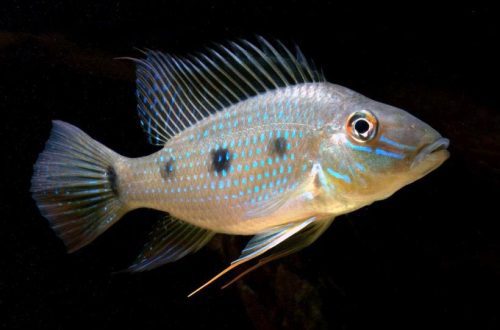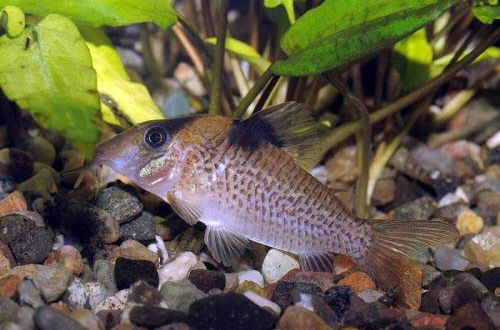
Metinnis spotted
Spotted Metynnis, scientific name Metynnis maculatus, belongs to the Serrasalmidae family. It looks like its close relatives Piranha, but has a calmer disposition and is easier to maintain. However, it is not recommended for beginner aquarists if they will be engaged in the maintenance of the aquarium on their own.

Contents
Habitat
It comes from South America from the basin of the Guapore River – one of the tributaries in the upper basin of the Amazon River. The natural habitat covers the spaces from Bolivia to the western regions of Brazil, including their border area. Found throughout the course.
Brief information:
- The volume of the aquarium – from 400 liters.
- Temperature – 20-28°C
- Value pH — 5.0–7.5
- Water hardness – 1–15 dGH
- Substrate type – any
- Lighting – any
- Brackish water – no
- Water movement – moderate
- The size of the fish is 12–13 cm.
- Nutrition – a diet of a variety of products (meat, vegetable)
- Temperament – inhospitable
- Content – in a flock of 6 individuals
Description
Adults reach a length of about 15 cm. The fish has a large disc-shaped body compressed from the sides. The coloration is silvery with a pattern of many rounded spots. Males during the spawning period acquire red shades on the lower abdomen. Other distinguishing features are the elongated first rays on the anal fin, which take on the appearance of a petal, and a large black spot behind the gill cover, which stands out from the rest of the pigmentation.
Food
An omnivorous species, it feeds on almost everything it can find. These are small fish, insects, worms, as well as algae, aquatic plants, fruits and seeds that have fallen into the water. In a home aquarium, a variety of foods should be served, combining both live, frozen food (earthworms, shrimp meat, mussels, etc.) and herbal supplements (blanched pieces of lettuce, peas, zucchini, fruits, etc.). On sale you can also find specialized commercial feeds that take into account all the dietary needs of such fish.
Maintenance and care, arrangement of the aquarium
The optimal size of an aquarium for a flock of 6-8 fish starts from 400 liters. The design should provide enough free space for swimming, combined with shelters in the form of branched intertwined snags, reminiscent of tree roots. The substrate is rocky, interspersed with large boulders. Live aquatic plants are not recommended as they will be quickly eaten. If there is a desire to add “greenery”, then artificial plants will be a good alternative.
Metinnis spotted makes high demands on the environment in which it is kept. It needs very clean running water rich in oxygen. It is advisable to use a system of internal filters, which, in addition to their main function – water purification, will create the current necessary for these fish. In some cases, it may be necessary to place additional aerator spray stones. In addition to equipment, the regularity of a number of aquarium maintenance procedures is of great importance (sometimes the key one): timely removal of organic waste (food leftovers, excrement), weekly replacement of part of the water (30–50% of the volume) with fresh water, etc.
Behavior and Compatibility
They prefer to be in a flock or a small group of at least 6 individuals. When kept alone, they become overly aggressive, nervous. Compatible with similarly sized South American cichlids, catfish, characins and cyprinids. Small species must be excluded, otherwise they will inevitably be considered as food.
Breeding / breeding
At the time of writing, the authors have not been able to find information on the successful breeding of this species in the artificial environment of the aquarium.
Fish diseases
It is an unpretentious and hardy fish. Health problems are associated with injuries, poor nutrition and inappropriate water composition. In the event of the appearance of signs of illness (lethargy, change in body shape, loss of appetite, etc.), it is sometimes enough to bring the conditions of detention back to normal so that the body copes with the problem. However, in some cases, medical treatment will have to be used. Read more about symptoms and treatments in the Aquarium Fish Diseases section.





